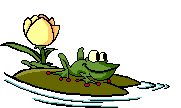
Fantastic Michigan
WILDLIFE
HABITAT©
CERTIFIED BY THE NATIONAL WILDLIFE
FEDERATION
|
Garden Web World |
Rain
Forest Splendor |
Garden
Splendor |
|
|
To return to this page, click the "Back" button on your browser. |
|||||||||||||||||||||
|
All Photos are copyrighted - Commercial use is strictly prohibited |
|||||||||||||||||||||
|
Click on any photo
to enlarge - Click on underlined text for more information |
|||||||||||||||||||||
|
|
|
|
A new-born - peacefully sleeping between the Viburnum
|

|
|||||||||||||||||||||
|
All material on this Web Site is copyrighted,
and may not be reproduced without written permission.
Copyright © Michigan Wildlife Habitat 2000-2010
All Rights Reserved Worldwide. Text, graphics and HTML code are protected
by US and International copyright laws and may not be copied, reprinted,
published, translated,
hosted or otherwise distributed by any means without explicit
permission.
|
Disclaimer: |
|
We are not responsible for the accuracy of the |
|
information provided at this Web Site or at linked Sites. |